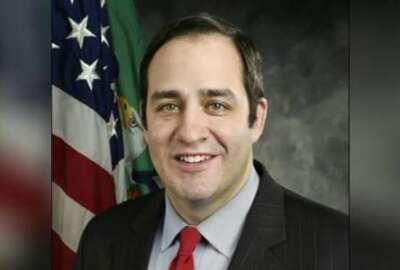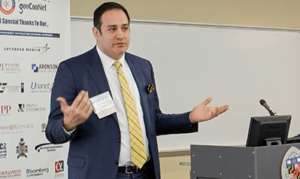
Exclusive
HHS CIO Arrieta unexpectedly resigns
Federal News Network has confirmed that Jose Arrieta told senior leadership he would be leaving the agency after only 16 months.
Jose Arrieta, the Department of Health and Human Services chief information officer, abruptly resigned today.
Arrieta said in an interview with Federal News Network that he told senior leadership he would be leaving the agency after only 16 months.
“It has been pretty intense since March with a lot of activity around the pandemic. We’ve had a number of cyber events and launched HHS Protect. We have got it to point where it’s fully functional and only some small technical things need to be addressed. We have been transparent with data and pushed boundaries. The leadership in technology is ready to lead us through this fall,” he said. “I want to spend time with kids, who like most kids are going to school online. This is a good opportunity to work with them because learning via Zoom isn’t easy for 5 and 8 year olds. I’m sad to leave people in HHS and the OCIO office is the best group I’ve ever worked with. This is the most I’ve felt at home during entire career.”
Arrieta said he was unsure when his last day would be, saying he told Secretary Alex Azar he could be as flexible as needed to ensure a smooth transition in the CIO’s office.
Arrieta becomes the second senior technology official to leave HHS in the last month. Todd Simpson, the chief product officer for HHS, left in July to be a deputy assistant secretary for DevSecOps at the Department of Veterans Affairs.

With Arrieta leaving, the HHS CIO’s office will be missing two key leadership positions and Robin Collins already is acting deputy CIO for enterprise services, meaning only Janet Vogel, as the chief information security officer, and Chambers are permanent executives.
Arrieta’s departure also marks the third CIO to leave in the last two years. He replaced Beth Killoran, who moved to the General Services Administration, and Ed Simcox served in an acting role.
No details about who will take over as CIO on an acting basis were available.
Arrieta’s decision to leave is surprising. He had only been in the CIO’s role since April 2019, and was an usual choice from the start.
But in his short tenure, Arrieta focused on IT modernization initiatives around the network and data.
He said in July, HHS upgraded its network to include adding more capacity for its virtual private network to handle the surge in telework during the coronavirus pandemic.
On the data front, HHS worked with Palantir to create a coronavirus data collection platform called HHS Protect, which pulls together more than 200 datasets from about 8,000 hospitals to create a common operating picture of the spread, impact and behavior of the virus. Arrieta said in July that the data from HHS Protect feeds into the report White House Coronavirus Task Force Coordinator Dr. Deborah Birx receives every night on the status of COVID-19 infection rates in the country.
Additionally, Arrieta focused on using emerging technologies like artificial intelligence and machine learning to focus on his customer needs as well as save money.
He said in February that the CIO’s office helped cut $20 million-to-$25 million out HHS’s operating costs. Arrieta said today HHS has seen a cost avoidance savings from strategically sourced contracts of $200 million this year, while his office’s customer service rating increased to 67% from 26% in one year.
“We’ve tried to cut out layers of overhead. We’ve tried to focus in directly on the customer and move the customer to the center of everything we do with the idea of standardizing the way we do business on different platform capabilities that we currently have and then sharing those platform capabilities across our customer base to actually push our costs down,” he said earlier this year.
Read more: CIO News
Arrieta said he doesn’t plan to apply or work in the private sector in the short term. He said he will take a month or two, or more, to figure out what comes next.
“We pushed really hard across all my priority areas. We lowered our operating costs. We moved to commercial cloud and we hardened our cyber posture. I think we hit it out of the park in each priority area,” he said.
HHS’s IT budget in fiscal 2020 is $6.6 billion and it requested $6.4 billion in 2021.
On the most recent Federal IT Acquisition Reform Act (FITARA) scorecard, HHS earned a “C-“grade for the third grading period in a row. HHS, which made significant progress in December 2018, fell backwards particularly in the fact the CIO still doesn’t answer directly to the HHS secretary or deputy secretary. CIO authorities around budget and oversight remain a problem and the agency doesn’t have a working capital fund for IT modernization as authorized under the Modernizing Government Technology Act.
Copyright © 2025 Federal News Network. All rights reserved. This website is not intended for users located within the European Economic Area.
Jason Miller is executive editor of Federal News Network and directs news coverage on the people, policy and programs of the federal government.
Follow @jmillerWFED
Related Stories






